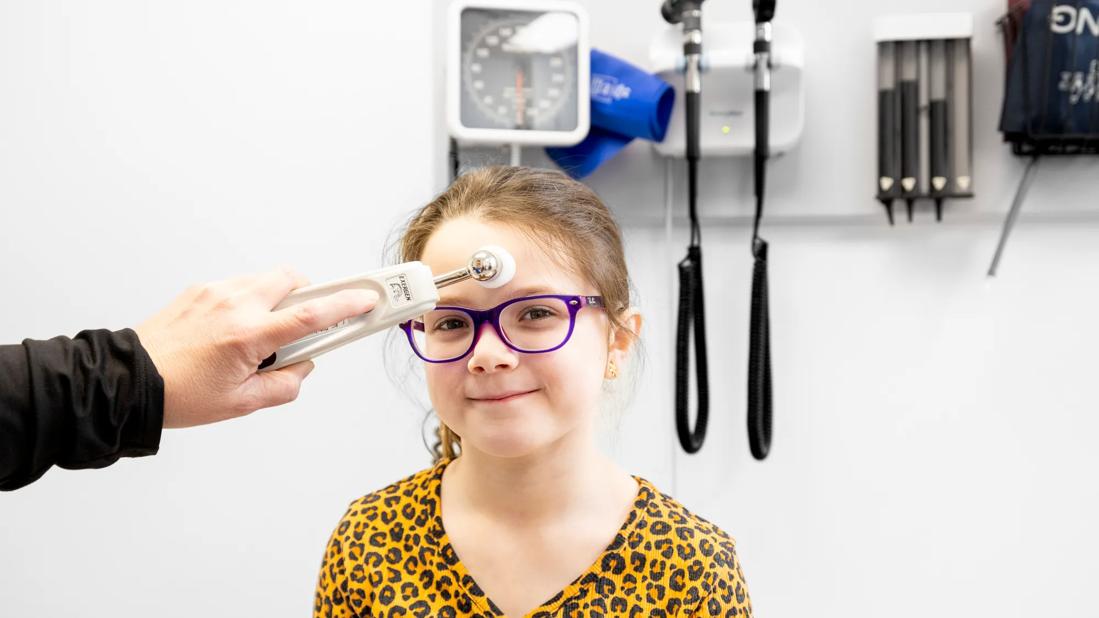Physician shares key considerations and other resources

For many pediatricians, if a child is doing well on medication, it makes sense to keep refilling it. But failing to reevaluate prescriptions regularly may lead to children taking more and more medications – some of which they may no longer need. That’s why advocates are calling on more providers to consider deprescribing, says Marie E. Trace, MD.
Advertisement
Cleveland Clinic is a non-profit academic medical center. Advertising on our site helps support our mission. We do not endorse non-Cleveland Clinic products or services. Policy
Deprescribing isn’t about being anti-medication, she stresses. Instead, it’s about making sure someone on the child’s care team is providing oversight of the complete list of their prescriptions and thinking critically about whether medications are actually helping or still make sense.
“The point is to have a more systematic approach to what we’re prescribing and why,” she says.
Dr. Trace, a developmental-behavioral pediatrician at Cleveland Clinic Children’s, recently participated in a presentation on deprescribing at the annual meeting of the American Academy of Child and Adolescent Psychiatry. She joined W. David Lohr, MD, a child and adolescent psychiatrist with the Child and Adolescent Health Research Design and Support Team (CARHDS) at the University of Louisville School of Medicine, in Toronto for the conference.
Many scenarios can lead to children taking unnecessary medication, Dr. Trace notes. For example, patients might be prescribed one medication, and then if it doesn’t work or causes unwanted side effects, another prescription is added before discontinuing the first. In other cases, the child may have multiple diagnoses with multiple prescribing providers.
“Perhaps there hasn’t been someone who has zoomed out and asked, do we need everything here and how do these medications work together? Are we undoing the benefits of one? Or are we setting the child up for increased side effects?” she says.
Dr. Trace says her “aha moment” for deprescribing came when she was treating a 4-year-old child with autism spectrum disorder. After careful consideration and discussion with the family, she prescribed risperidone to help manage the child’s irritability, aggression, and self-injurious behaviors.
Advertisement
“When the medication was started, it was thoughtful and appropriate,” she says. “A lot of time, information, and discussion went into the decision including the off label use due to the child’s age.”
Eventually, the child’s behavior stabilized, and the family wanted to wean the medication, which she supported. However, not long after starting the wean, they contacted her asking to restart, saying that the child had become fussier and was getting easily upset when caregivers left the room.
In the middle of a busy day seeing patients and wanting to support the family’s wishes, Dr. Trace automatically agreed — even though it had only been about 72 hours since starting the wean. But, looking back, she reflects, “It was not a thoughtful response.”
Ideally, she would have taken time to pause, think about the situation, and have a longer conversation with the family about what was going on. A key consideration: while the child’s fussiness was certainly distressing, it was not the same behavior as the aggression for which the medication had originally been prescribed.
“Ideally there would have been some discussion,” she says, “including a longer discussion when we decided to wean about what things to look out for, as well as a ‘what if’ discussion about possible scenarios and reflection on why we started the medication initially.”
First and foremost, if the condition has stabilized, it’s a good time to check whether the medication is still necessary, she says.
“When patients come to us and things are going well, our response is often, ‘no news is good news, let’s not change anything,’” she says. “The reality is we should be looking at those medicines every time.”
Advertisement
In addition, when polypharmacy is a concern, and the patient is taking a long list of medications for overlapping conditions, it makes sense to reassess whether all those prescriptions are necessary and check for any drug interactions.
Other considerations include when a child under the age of 6 is taking psychotropic medications, if the child or their family has asked to be taken off a medication, or if there is a lack of evidence to support use of a medication. This can come into play when a medication is being used to treat a younger child for which it’s not age-approved.
Finally, if the medication is causing unwanted side effects, or if the patient is not taking it as prescribed, that’s a sign it may be time to reevaluate the prescription.
“It may be that you change nothing,” she says. “It may be that you say, I’ve thought about all the medications, and I think that the child is benefitting from them. It’s just about taking the time to pause and ask the question.”
To learn more, Dr. Trace recommends visiting Kentucky SafeMed, a program developed by Dr. Lohr and the CAHRDS team, which has information and resources on deprescribing best practices: louisville.edu/medicine/departments/pediatrics/research/cahrds/safemed/KYsafemed
Advertisement
Advertisement

Complex disease requires a comprehensive approach

Research aims to understand factors to help standardize practices

Specialists in the growing specialty are well-positioned to foster seamless, high-value care

5 things a child psychiatrist wishes all pediatricians would do

Effect of low-dose atropine and dual-focus contact lenses is unknown in patients with comorbid eye conditions

Giving young patients a hand as they take charge of their own health

Weight loss medications, lifestyle and systemic risk factors, and more

Review article offers guide for performing an in-office visit